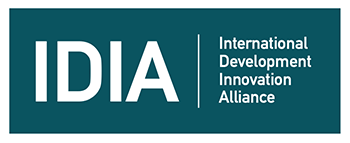5 things working in the fight against malnutrition in India
[Editor’s note: This is the third blog post in a series on nutrition financing in Rajasthan. The Results for Development Institute, with support from the Children’s Investment Fund Foundation (CIFF), analyzed budgetary allocations to nutrition in the Indian state of Rajasthan in a report, released in February 2016. Read the first and second posts on how India’s new budget, in light of devolution, affects funding for nutrition.]
By Rifaiyat Mahbub and Bailey McWilliams
Despite rapid economic growth over the last decade, India continues to struggle to provide access to basic food and healthcare to large sections of its population. The state of malnutrition is particularly dire and widespread in states such as Bihar and Rajasthan. India is home to 43 percent of the world’s malnourished, amounting to 191 million people — 16 percent of its population.
In Rajasthan, a state in India, where malnutrition is especially severe, tackling this public health crisis requires more funding for nutrition. While greater resources are vital, it’s also important for the state to leverage its current spending to maximize nutrition improvements — and it need not look further than other states for guidance. Maharashtra has seen one of the most rapid declines in stunting of any state in India. Experts cite its targeted, streamlined, and multisectoral nutrition strategy (and the mission that governs it) as a major factor in its visible improvement.
Results for Development (R4D) recently reviewed Maharashtra’s strategy and identified five key factors that helped make it successful. As Rajasthan and other states develop and refine their own strategies, they would do well in taking a page — or five — from Maharashtra.
1. Focus on proven approaches
Addressing malnutrition within the first 1,000 days of life — the period between conception and age 2 — is critically important to reduce child stunting (low height for weight). Stunting is the largely irreversible outcome of chronic undernutrition and affects 159 million children under 5. Stunted children have weaker immune systems, making them more susceptible to death and disease, and diminished cognitive capacity, which affects their ability to learn in school and earn higher incomes later in life. Once children reach age 5, reversing the impacts of malnutrition becomes increasingly difficult.
India’s largest nutrition-related program, the Integrated Child Development Services (ICDS), focuses its interventions on education and supplementary food for pre-school children (ages 4-6) rather than targeting the nutritional needs of those within the 1,000-day window. However some progress is beginning to be made — the World Bank began restructuring ICDS through their ISSNIP Program in 2013 in Maharashtra, Rajasthan, and 6 other states.
In Maharashtra, one of the state nutrition strategy’s central goals is to reduce malnutrition by focusing on that 1000-day window. Through its independent nutrition mission, the state was able to work successfully with ISSNIP towards advocating for more home-based care in the first two years of life while strengthening the program’s overall policies and approach. The mission also trained mothers and caregivers in child-caring practices, ultimately lowering stunting rates throughout the state by 16 percent over a seven-year period. If Rajasthan and other participating states begin to shift their focus on the first 1000 days, they may also see higher social returns on nutrition investments.
2. Take a multisectoral approach
Addressing malnutrition is multisectoral by nature. Agriculture, social protection, health, and education programs, in particular, can be redesigned to target nutrition. This kind of convergence and coordination across sectors has lowered stunting levels by 4 percentage points per year in Peru, starting in 2006. However, neither Rajasthan nor India (at the national level) have mechanisms in place to lead such a synchronized effort. Currently, nutrition interventions exist within broader health and child development programs (like ICDS) with no collective push to tackle malnutrition.
Maharashtra’s strategy, however, has achieved this. It presents an effective and collaborative push for nutrition that gives emphasis to multi-sectoral activities, prioritizes interventions, identifies target districts, sets outcome goals, assigns roles to nutrition-relevant sectors, identifies resource needs, and incorporates mechanisms to measure performance.
3. Activate ‘mission mode’
Maharashtra launched its nutrition strategy in 2005 under the supervision of the Rajmata Jijau Mother-Child Health & Nutrition Mission (RJMCNM), India’s first state-level nutrition mission. The RJMCNM serves as a technical, advisory, and training body with a three-part mission: to advocate for the importance of the first 1000 days of a child’s life; to provide policy advice to the government on evidence-based nutrition interventions; and to act as a platform to foster convergence among different departments with a common objective of reducing malnutrition.
The absence of an effective coordinating body to design, implement, and monitor a nutrition plan, along with the lack of a plan itself, are serious obstacles to improving nutritional outcomes. Even with a revamped strategy, it would be difficult for one ministry or office to take ownership of managing initiatives that span multiple sectors. Maharashtra’s RJMCHM is proof of the benefits that come from a multi-sectoral coordinating body for nutrition. In 2005, when it was first established, 39 percent of children under 2 in the state were stunted. By 2012 stunting rates dropped by 16 percent — a rapid improvement never before seen in the country.
4. Start small, aim big
Maharashtra’s nutrition revolution dates back to 2002, when officials began tracking and working to improve child nutrition levels at the district-level—reaching about 2 million children under 6. Three years later, Maharashtra built upon the campaign to form the RJMCNM it’s known for today. In stages, the mission expanded coverage until it was tracking the entire state, covering nearly 15 million children under 6.
Rajasthan rolled out a similar program last year, entering a partnership with Tata Trust and Antara Foundation. The Akshada Program is working in two districts to improve nutritional outcomes in children under five (with a focus on the 1000-day window) and will include the most critical areas like maternal anemia, neonatal mortality and improving immunization. Similar to Maharashtra, this district-level program will eventually be scaled up statewide. By starting small, states can hone best practices and expand upon their strategy to improve nutritional outcomes from the bottom up.
5. Ensure consistent, committed leadership
Government transitions and high government official turnover rates have resulted in a lack of continuity and ownership of nutrition programming over the last decade. While government turnover can neither be avoided nor anticipated, it is possible at the state-level to mandate minimum terms for all state officials for each posting, as was done in Maharashtra and now beginning to be done in other states as well. Encouraging longer postings and setting a minimum term can lead to sustained policy input and program support, and could also yield high returns on donor attention.
In addition, securing the support of high-level government leadership is critical to elevating nutrition to the top of the government agenda. In Maharashtra, RJMCNM’s technical body functions directly under the state’s Chief Minister, who, as the highest ranking state official, is able to leverage the position’s influence and rank to foster ongoing state-level government commitment to nutrition and ensure horizontal coordination of nutrition-relevant sectors.
A number of other states are already beginning to replicate Maharashtra’s efforts, including Gujarat, Uttar Pradesh, Madhya Pradesh, Jharkhand, and Orissa. Rajasthan can also follow suit by establishing its own strategy and mission with the Chief Minister as the head to ensure governmental support and coordination. The state could also draft a multisectoral plan that focuses on nutrition, draws in multiple departments and implements minimum tenure requirements for government officers associated with the nutrition strategy. By enacting these changes simultaneously, Rajasthan — and other states — may begin to see notable improvements in its nutrition policy, programming and outcomes throughout the state.
Photo © iStock.com/Anantha Vardhan













